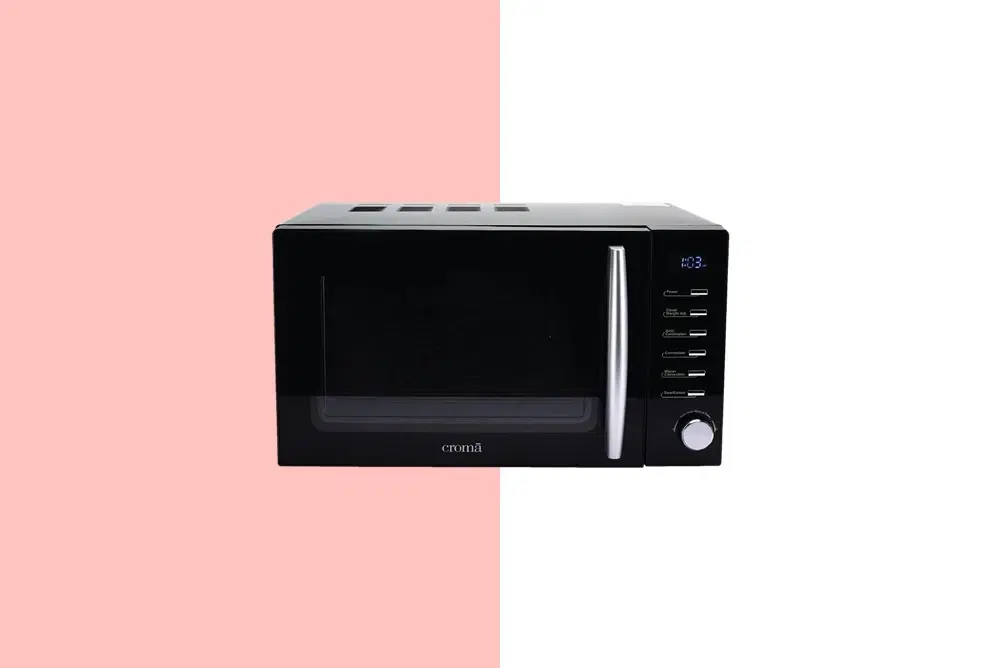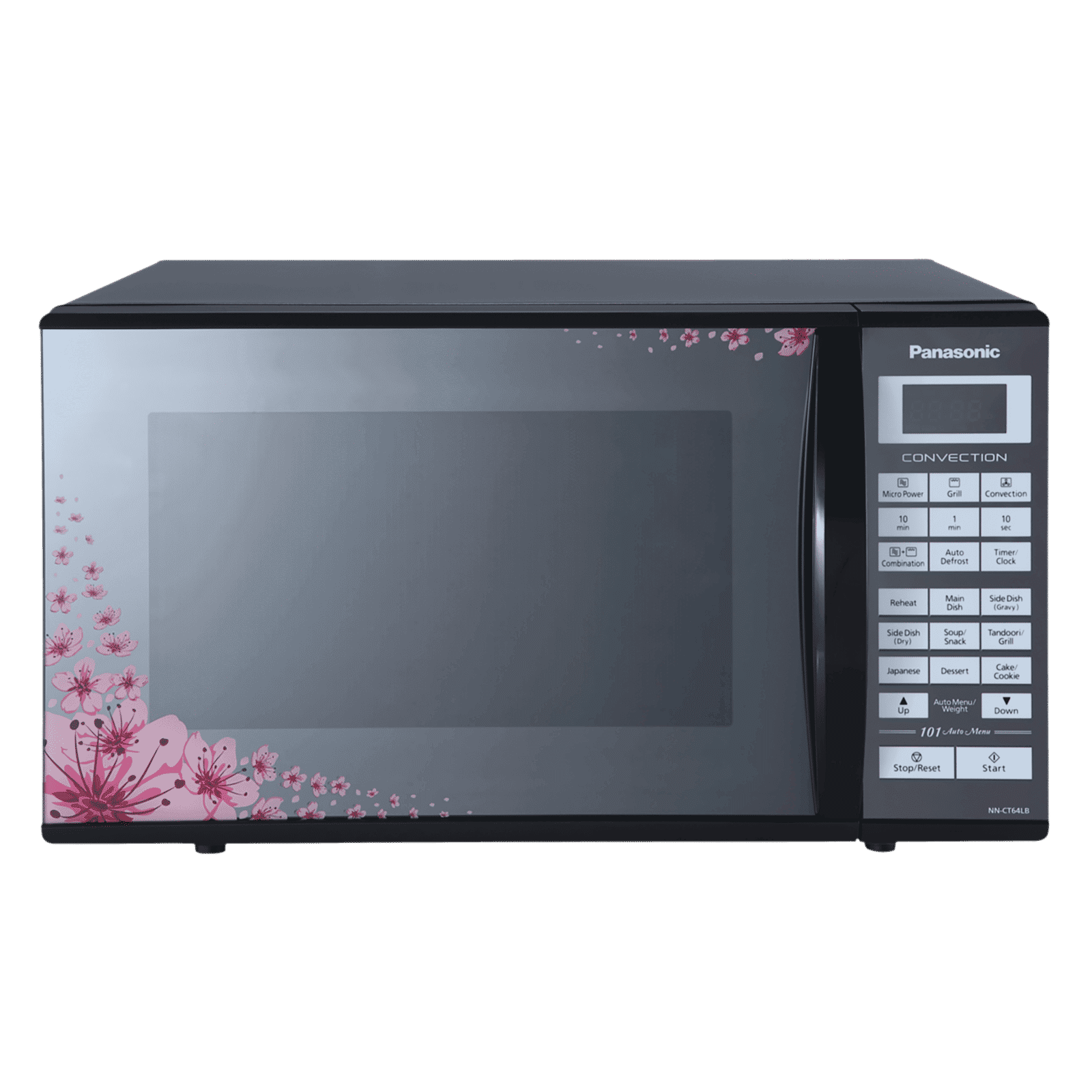
Home Appliances
•06 min read

Buy Panasonic 27L Convection Microwave Oven with 101 Autocook Menus (NN-CT64LBFDG, Silver/Black) online at best prices from Croma. Check product details, reviews & more. Shop now!
Imagine this: You’re in a rush, and the microwave is your best friend for a quick meal. But as you reach for a bowl, you hesitate, unsure if it’s safe to use. Selecting the right utensils for microwave cooking can be confusing, but it’s essential for safety and efficiency. In this blog, we’ll clear up the confusion and answer the question, “what utensils can be used in microwave?” With Tata Neu and Croma, you can trust that you’re getting the best advice and products for your kitchen.
Microwave ovens have become indispensable in modern kitchens, offering quick and convenient cooking solutions. However, using the wrong utensils can lead to uneven heating, potential hazards, and even damage to your microwave. Understanding which materials are safe to use can help you make the most of your microwave while ensuring your safety and the longevity of your kitchenware.
Microwave-safe utensils are designed to withstand the heat and electromagnetic waves produced by microwaves without melting, warping, or releasing harmful chemicals. Using the right utensils ensures your food is heated evenly and safely. For instance, microwave-safe glass and ceramic dishes are excellent choices because they do not absorb microwave energy and heat food uniformly.
Glass: Ideal for microwave use, as it heats evenly and doesn’t absorb food odors or stains. Glass containers are perfect for reheating leftovers and cooking dishes that require consistent heating.
Ceramic: Another excellent choice, but ensure it doesn’t have metallic paints or trims. Ceramic bowls and plates are versatile and can be used for a variety of microwave cooking tasks.
Certain Plastics (BPA-free): Look for plastics labeled as microwave-safe and free from harmful chemicals like BPA. These plastics are convenient for reheating and storing food without the risk of chemical leaching.
Silicone: Flexible and heat-resistant, making it perfect for microwave cooking. Silicone bakeware and lids are great for steaming vegetables and baking in the microwave.
Metal: Never use metal utensils in the microwave as they can cause sparks and damage the appliance. Metal reflects microwave energy, which can lead to arcing and potential fires.
Non-Microwave-Safe Plastic: These can melt and release harmful chemicals into your food. Always check for microwave-safe labels on plastic containers before use.
Styrofoam: Not suitable for microwave use as it can melt and potentially release toxic substances. Styrofoam containers are not designed to withstand high temperatures and can deform or leach chemicals.
Certain Ceramics with Metallic Paints: These can cause sparks and are unsafe for microwave use. Avoid using ceramics with metallic decorations or trims in the microwave.
Always check for labels or symbols indicating that a utensil is microwave-safe. This simple step can prevent accidents and ensure your food is cooked safely. Microwave-safe labels are usually found on the bottom of containers and indicate that the material has been tested for microwave use.
To test if a utensil is microwave-safe, place it in the microwave along with a cup of water and heat for one minute. If the utensil remains cool while the water heats up, it’s safe to use. This test helps you identify materials that do not absorb microwave energy and are safe for cooking.
Investing in high-quality microwave-safe utensils from trusted brands like Croma ensures safety and durability. With Tata Neu, you can enjoy rewards like NeuCoins and exclusive savings, making it a smart choice for your kitchen needs. Croma offers a wide range of microwave-safe products, including glass containers, ceramic dishes, and BPA-free plastic ware, all designed to enhance your cooking experience.
Microwave-safe utensils ensure even heating, reducing cooking time and improving the overall efficiency of your microwave. This means you can prepare meals faster and with consistent results, making your cooking experience more enjoyable.
Using the right utensils prevents damage to both your microwave and the utensils themselves, ensuring they last longer. High-quality microwave-safe utensils are designed to withstand repeated use without degrading, providing you with reliable kitchenware for years to come.
Microwave-safe materials prevent harmful chemicals from leaching into your food, making your meals healthier and safer. By choosing BPA-free plastics and non-toxic materials, you can reduce the risk of chemical exposure and enjoy peace of mind while cooking.
Using a microwave-safe cover can prevent splatters and retain moisture, making your food taste better. Also, avoid using utensils with metallic trims or decorations as they can cause sparks. Microwave-safe covers are designed to fit over dishes and prevent messes, keeping your microwave clean and your food moist.
Glass, ceramic, BPA-free plastic, and silicone are the best materials for microwave-safe utensils. These materials are designed to withstand microwave energy without degrading or releasing harmful substances.
No, metal utensils can cause sparks and damage the microwave. Always use microwave-safe materials to avoid hazards and ensure safe cooking.
Place the utensil in the microwave along with a cup of water and heat for one minute. If the utensil remains cool, it is microwave-safe. This simple test helps you identify safe materials for microwave use.
No, only BPA-free plastics labeled as microwave-safe should be used. Always check for microwave-safe labels to ensure the plastic is safe for cooking and reheating.
They can melt, release harmful chemicals, or cause damage to your microwave. Using non-microwave-safe utensils can pose health risks and damage your appliance.
No, aluminum foil should not be used in the microwave as it can cause sparks and fires. Use microwave-safe covers or lids to prevent splatters instead.
If a microwave-safe utensil gets hot, it may not be truly microwave-safe. Discontinue use and replace it with a verified microwave-safe option. Always prioritize safety when selecting utensils for microwave cooking.
In summary, using microwave-safe utensils is crucial for safety, efficiency, and health. Always check labels, conduct simple tests, and invest in quality products from trusted brands like Croma. Explore Tata Neu for a wide range of microwave-safe utensils and other kitchen essentials. Enjoy rewards, expert advice, and reliable after-sales support with every purchase. With Tata Neu, you can revolutionize your kitchen experience, combining the trust of Tata, Croma’s technological expertise, and a rewarding customer experience.
We invite you to leave comments or questions below and explore more informative content on the Tata Neu blog. Happy cooking!